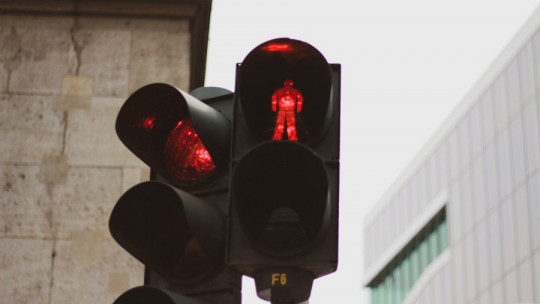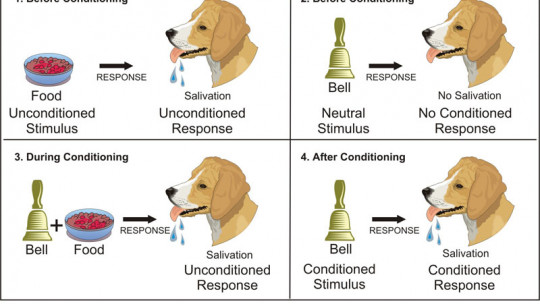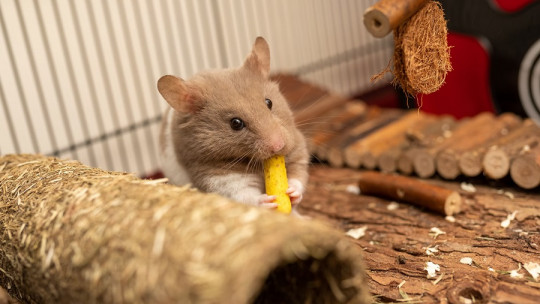
Surely it has happened to you at some point, that after eating some type of food and feeling stomach pain, you end up refusing (consciously or unconsciously) to eat that food again, at least for a while.
But why does this happen? It can be explained through the García effect a phenomenon of classical conditioning.
This phenomenon, discovered by the American psychologist John García in the 1950s, consists of a type of aversive conditioning to taste, which began to be studied with rats. In this article we will learn how this effect was discovered, what it consists of and why it occurs.
García Effect: what does it consist of?
The García effect is a phenomenon that we find within classical conditioning, and that alludes to the fact that An exteroceptive Conditioned Stimulus (CS) (for example a light or a sound) is more easily associated with an exteroceptive Unconditioned Stimulus (US) and that an interoceptive CS (for example a type of food) is more easily associated with an interoceptive US.
An example of this effect would be when we feel stomach pain, or nausea, and then we relate it to something we have eaten; It doesn’t matter if the pain or nausea occurs for any other external reason, which most of the time we will relate to food.
This occurs because selective conditioning occurs according to the type of stimulus ; That is, we associate the nature of the stimulus with the nature of the response, which must be the same (in this case, an internal origin). But how was the discovery of the García effect reached? Let’s go to the origin.
Origin of aversive conditioning
The origin of the study of aversive conditioning to taste can be found around the 1940s. To carry out these studies, poison was used in order to eradicate rat and mouse pests. Let us remember that aversive conditioning involves learning a rejection response towards some type of stimulus.
Specifically, this type of conditioning we are talking about is associated with the taste or smell of certain foods (which would be the aversive stimulus).
Ten years later, around the 50s, John García, an American psychologist, became interested in studying aversive conditioning. He was the creator of the so-called “Garcia Effect”. This psychologist and researcher studied at the University of California (Berkeley) and later began working in San Francisco for the Navy.
John García’s experiments
It was in San Francisco where, through his experiments with rats, J. García applied the same ionizing radiation to them to cause gastric pain. He immediately observed how they stopped drinking water from the plastic bottle, since They had associated belly pain (internal conditioned response) with the plastic of water bottles (internal conditioned stimulus).
He also studied it with food, and the effect was the same. This occurred even if the cause of the belly pain was someone else. According to him, and what defines the García effect itself, the rats associated these two stimuli (which, in reality, had nothing to do with each other, because the belly pain was caused by another stimulus, ionization), because they had the same internal nature. .
Thus, the García effect refers to a type of conditioned reflex of rejection of certain foods and flavors. In this case, the rejection stimulus would be the water contained in the plastic bottles.
Variations in experiments
John García used another technique to demonstrate the García effect; What he did was change the taste of the water in the plastic bottles by adding saccharin to the container. It was thus a new taste for the rats. J. García incorporated a red light in the container with the water+saccharin.
He saw how the rats continued to reject the water (in this case, with a new flavor), but they did not reject the red light contained in the container. This last phenomenon reinforces the fundamental idea of the García effect, which refers to the nature of the stimuli, considering that it must be the same for conditioning to occur (in this case, light is an external stimulus, and stomach pain is internal).
Rejection of your investigation
At first, John García’s research was rejected by the scientific community because they did not follow the basic principles of classical conditioning, considered true. This is why prestigious scientific journals, such as Science, refused to publish their findings.
Characteristics of the psychological phenomenon
It is interesting to explain the novel contributions that John García made to the field of classical conditioning, based on the phenomenon of the García effect. These also allude to the characteristics of said effect, and were the following:
On the one hand, he determined that conditioning could be achieved only through exposure, and that It was not always necessary for many exposures to occur to achieve conditioning or learning. He also maintained that conditioning was selective; In the case of rats, they associated belly pain (internal response) with food or drink (internal stimulus).
On the other hand, they did not associate pain with external stimuli (for example, a red light), even if they were paired in time; This is because the García effect defends the association of stimuli of the same nature.
Besides, Another novelty proposed by J. García was that the time interval What occurred between the conditioned stimuli (in this case, the taste and smell of the food) and the unconditioned response (gut pain) that ended up being conditioned (rejection of the food), was prolonged.
This interval could even reach 6 hours. That is, up to 6 hours could pass from when the animal ate until it suffered the belly pain, and that in any case the conditioning and learning occurred that “the food has caused me this pain, therefore I reject the food.” meal”. Finally, the García effect is a phenomenon that is resistant to unlearning, that is, it is difficult to extinguish (it is difficult for it to disappear).
Examples in everyday life
Another characteristic of J. García’s phenomenon is that the fact that the animal (or person) knows that the reaction or discomfort (belly pain) is caused by a disease (for example flu or cancer), does not prevent it from continuing. rejecting said food.
This is also seen in cancer patients, who end up developing a rejection of the food they have consumed prior to a chemotherapy session if the latter has caused nausea or vomiting; Thus, although the person “knows” that the food has not caused nausea and vomiting, his body continues to reject it because it is associated with these symptoms.
Other animals
The García effect was also demonstrated in other animals such as coyotes. J. García observed how these generated a conditioned response of rejection of poisoned foods. To achieve this conditioning, as in the case of rats, a single exposure was enough.
They even managed to get coyotes to reject sheep meat by injecting poison into it. In this way, these animals ended up associating gastric discomfort with the taste of meat and therefore, they finally refused to eat this type of meat. The García effect was also demonstrated in crows, which, using the same mechanism, made them refuse to eat the birds’ eggs.








